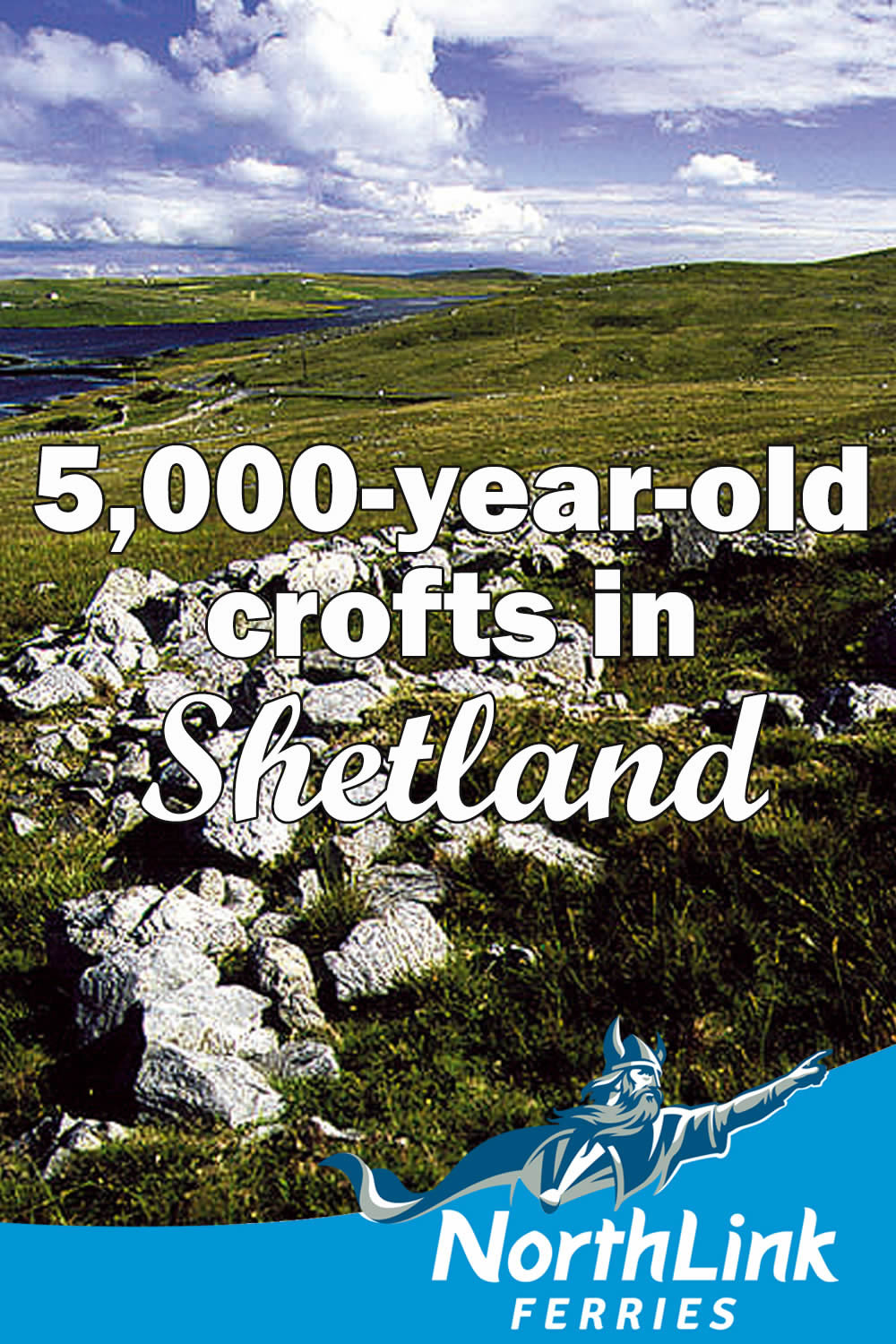5,000-year-old crofts in Shetland
The sea has provided the inhabitants of Shetland with a plentiful supply of food for thousands of years. However since Neolithic times, farming the land has also been important to islanders.
Clearance cairns can still be seen. These are mounds of stones which have been cleared from the surrounding fields.
Pollen studies show subtle changes to vegetation around 5,000 BC which indicate that humans have been working Shetland’s fields since that time.
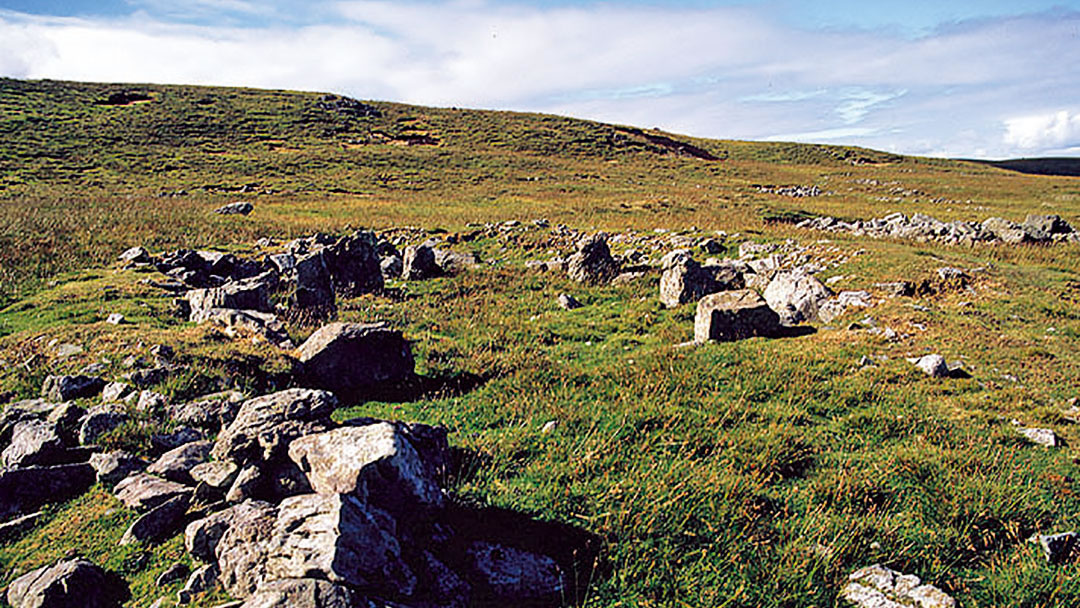
You can easily see farmsteads from the past, especially along the quiet rural roads on the west side of Shetland. As well as seeing sheep and Shetland ponies, visitors can spot ancient dwellings and fields, and follow boundary dykes for miles across the hill.
These come from the Neolithic period, 5,000 years ago. At that time, it was warmer and drier in the Northern Hemisphere than it is now, due to subtle changes in the Earth’s orbit of the sun.
The traces left behind that reveal much about the people who lived, grew crops and kept their sheep and cattle here.
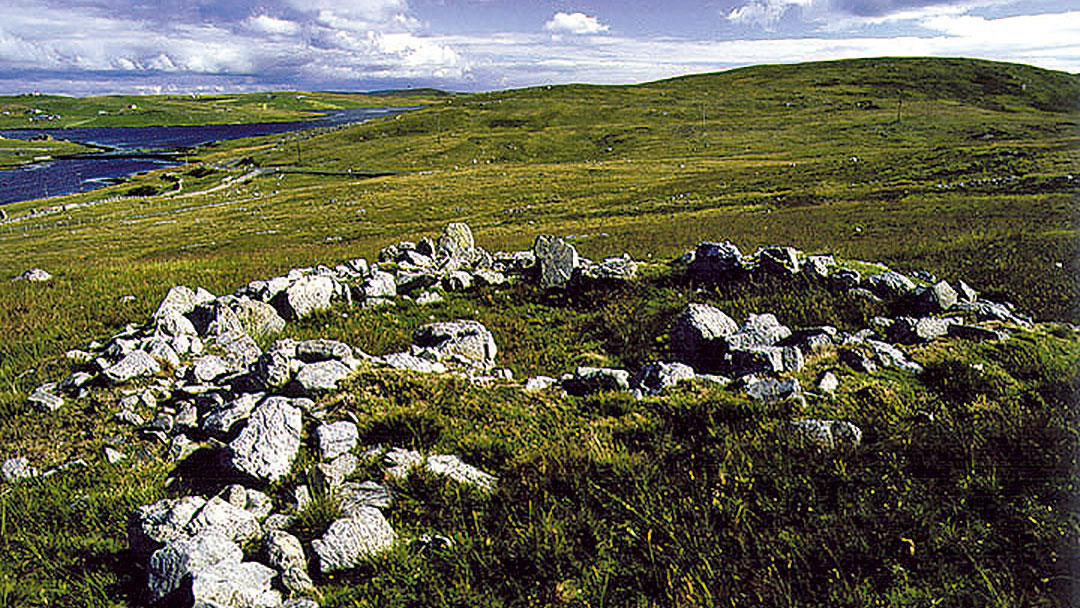
The Scord of Brouster
- The Scord of Brouster is one of the earliest Neolithic farm sites in Shetland. Found on a hillside near the Bridge of Walls, there’s a sign for it when travelling along the A971 to Sandness.
- Scord is from the Old Norse ‘ridge’ and Brouster means ‘bridge farm’.
- The three houses here are oval-shaped. This was a typical shape for Neolithic houses. Rectangular house designs only arrived with the Vikings. The oldest house is 13m long x 10m wide and the other two houses are 11m long x 8m wide.
- The three stone dwellings were built on top of earlier wooden buildings, which can no longer be seen. They contained a central hearth and stone cells (beds?) lined the walls inside.
- When farmers first settled here it was a woodland of willow, hazel and birch. They cleared the area and fertilised the soil with ash from their fires and manure from their sheep and cattle. The main crop grown was barley or bere for making bread and beer.
- Traces of the field walls can still be seen. There are also clearance cairns. These are mounds of stones which have been cleared from the surrounding fields. There is a structure which could have been an outhouse or workshop.
- 10,000 pieces of quartz were found at the Scord of Brouster. A handled club, pottery, and one of the earliest hoe-blades found in Scotland were also recovered. There were broken stone tips from a wooden plough. The farmers used oxen to plough their fields with a wooden plough called an ard.
- The farm was in use for a long time. The first house was built in 3,000 BC. However, the Scord of Brouster was abandoned when the climate became wetter and peat began to form around the farm in 300AD. Though the farmers initially kept the peat out of the fields, eventually they chose to move to more fertile land nearer the shore.
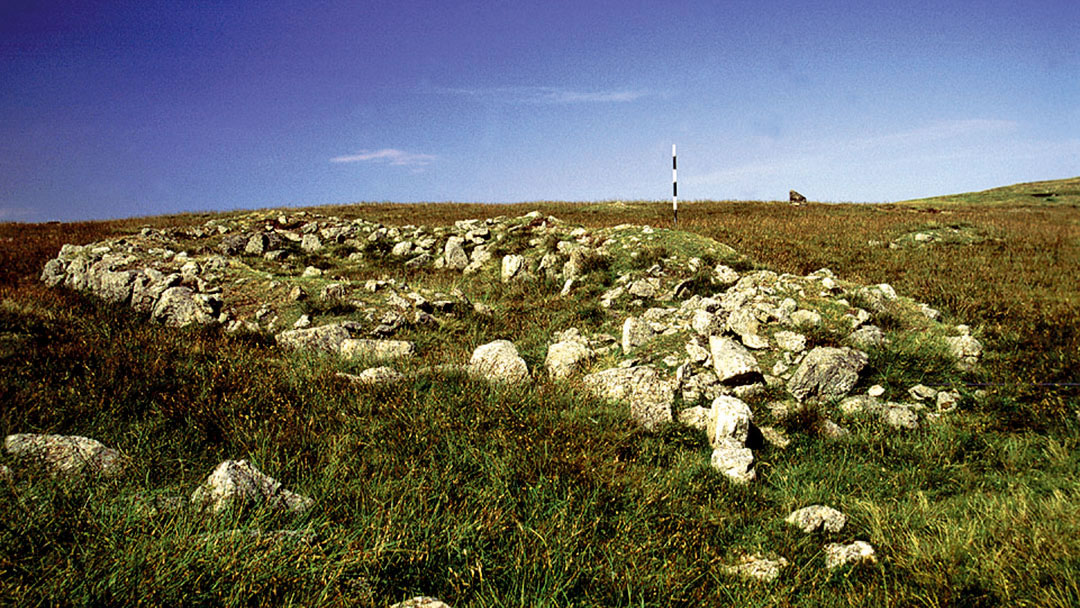
The Ness of Gruting
- Located by Seli Voe, on the shore of the Gruting peninsula near Walls, the Ness of Gruting is another fine example of a Neolithic farmstead in the west side of Shetland.
- Houses are in evidence, as are field dykes, plantiecrubs (low stone enclosures for protecting plants from the wind) and clearance cairns (almost 50 piles of stones were cleared from the fields).
- Lynchets can also be spotted at the Ness of Gruting. A lynchet is an earth terrace on the side of a hill. These ridges form naturally on slopes which have been ploughed over a long period.
- A quantity of burnt barley, two polished stone axes and a stone hammer were also found here.
- Ness comes from the Od Norse for ‘point’ and gruting comes from grýtingr, meaning ‘a stony stretch’.
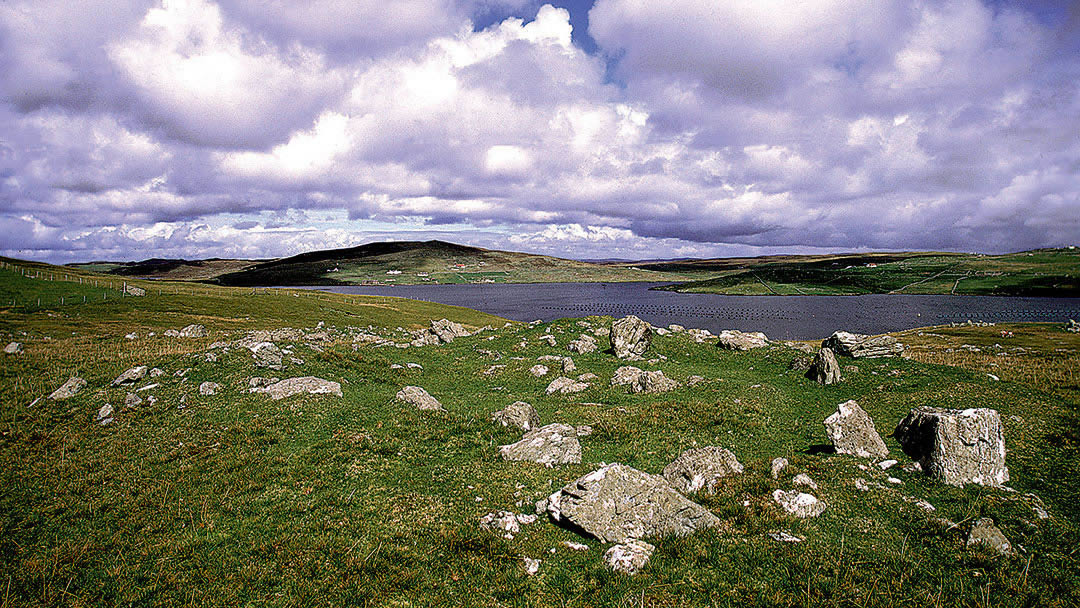
Pinhoulland
- Another Neolithic farmstead in the west side of Shetland, Pinhoulland is unique in that it is a cluster of several houses that may have been connected by a series of passages. The site is similar to the Neolithic village of Skara Brae in Orkney and is the only example of this type in Shetland.
- There is some debate to the number of houses that are here. Some experts think 8, and some count as many as 17. There were possibly 8 fields, as well as walls and clearance cairns.
- Not all the houses were used at once. This farm was used for hundreds of years, with old buildings being replaced by newer ones.
- Like Skara Brae, Pinhoulland shows that communal living was favoured by Neolithic people. Did Pinhoulland fall out of use in the Bronze Age, like Skara Brae, when families set off to establish their own individual farmsteads?
- The name comes from Old Norse and means ‘assembly hill land’. Vikings held often held meetings (called ‘Things’ or ‘Tings’) in the rubble of older buildings such as brochs, and it is possible that this happened here.
- Pinhoulland is located on a hillside on the approach to Walls.
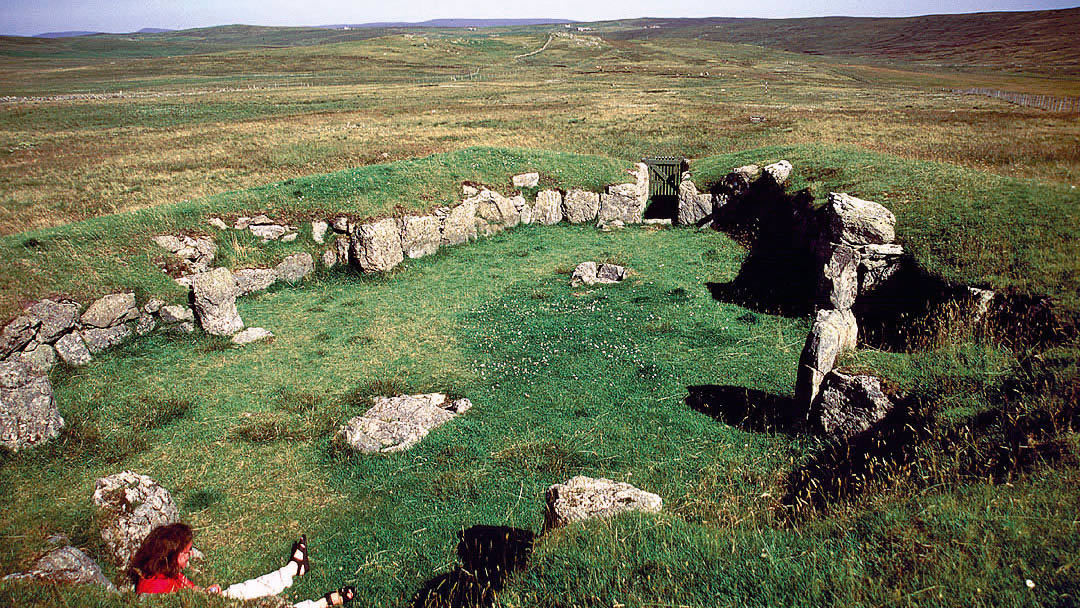
Stanydale temple
- One of the most impressive Neolithic buildings in Shetland, Stanydale temple was named for its size. This massive, heel-shaped building dwarfs other Neolithic structures. It had 5m thick walls and, possibly, heavy timber doors.
- Stanydale temple is located in the west side and is a 15-minute squelchy walk up a hillside close to Gruting. A signpost can be seen on the road to Hulmalees and route markers show the way. It is out of sight of the sea, which is quite a feat in Shetland. Was this a deliberate choice?
- Stanydale is old Norse for stony valley, and the area is strewn with rocks. There are five houses as well as the impressive temple.
- Was this building a chieftain’s hall, a church, or a gathering place for a farming community? Ritual objects such as pottery, a pile of burnt sheep bones and highly polished pristine Felsite knives (placed side by side) were found at Stanydale temple.
- The building contained both Neolithic and Iron Age pottery, indicating that it was used for a significant amount of time.
- An interesting feature to Stanydale temple was the post holes in the floor, into which poles were inserted to support the roof. Carbonised remains of these poles were found, and the wood was spruce which is not native to Scotland. These posts must have been driftwood from Scandinavia which arrived on Shetland shores.
We hope you enjoy visiting these ancient farmsteads and that they offer a glimpse back to life in the Shetland islands thousands of years ago!
 By Magnus Dixon
By Magnus DixonOrkney and Shetland enthusiast, family man, loves walks, likes animals, terrible at sports, dire taste in music, adores audiobooks and films, eats a little too much for his own good.
Pin it!
